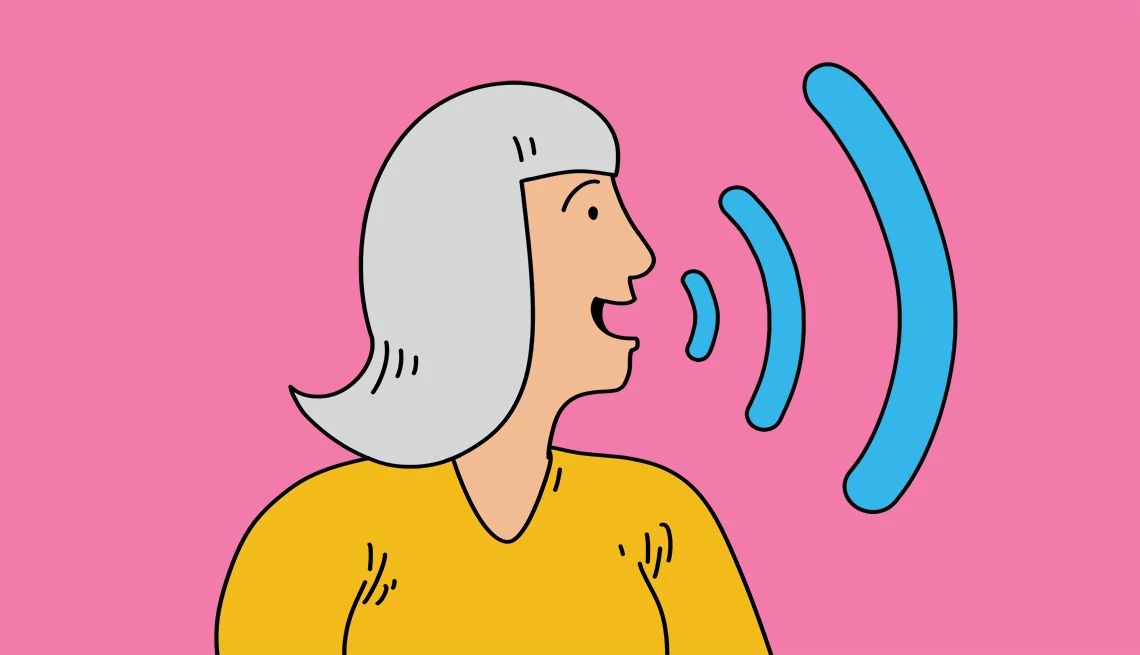AARP Hearing Center


Research shows that for older adults, a daily routine can help reduce stress and anxiety. However, the predictability of daily life can also lull us into a sense of complacency. Trying a new skill, meeting new people or traveling somewhere unfamiliar may seem overwhelming, but stepping outside of our comfort zones can provide a host of mental health benefits, and research suggests that novelty and new experiences may also promote brain health. To help give you the courage to try something new, we’ve gathered ways to mentally prepare yourself — as well as a sampling of new adventures to try — so you can shake up your routine and live a fuller life.
1. Break it down
To avoid anxiety responses to new challenges, break them into pieces. Imagine you’re trying to learn Italian. Instead of immersing yourself in a full Verdi opera, start by memorizing 10 vocabulary words, or a couple of greetings, says neuropsychologist John B. Arden, author of Rewire Your Brain 2.0.: Five Healthy Factors to a Better Life. “We have two hemispheres in our brain,” Arden says. “The right side sees the big picture. The left hemisphere is more for details, routines and approaching a new behavior. When the right side of the brain is overactive, you’ll feel anxious and overwhelmed by the totality of everything.” Small and repetitive successes will forge new neural pathways so you can stick with changes in the long term.
2. Face your fears
Afraid of heights? Claustrophobic? Confront your fears by gradually putting yourself into the “discomfort zones” that trigger your anxiety. Psychologists call this exposure therapy. While it has a success rate up to 90 percent when done under a doctor’s care, you probably don’t need professional help unless your phobias are profoundly debilitating. For most of us, facing our mundane fears head on and pushing past them can help us feel courageous. It might also be the first step toward deeper changes.
3. Train yourself to be positive
You can teach yourself to tamp down anxiety and be more courageous about new experiences by creating positive feedback loops, Arden says. Neuroplasticity describes the brain’s ability to adapt to changing environments and learn from them by forging new neural pathways. “The whole idea of ‘behavior changes the way you think and feel’ now is supported by neuroscience,” Arden says. “You have to force yourself to tread new neural pathways. How do you create new pathways? By doing what you don’t feel like doing until you feel like doing it.” Arden gives the example of studying for a test. “It doesn’t feel right. Because you’ve got to practice.” After a while, studying becomes a habit. “But just having a new habit doesn’t mean that it’s going to be there forever. You’ve got to stay determined.” Eventually, discomfort gives way to the reward of a new positive behavior.
4. Learn assertiveness
Sometimes stepping outside of your comfort zone means improving your personal relationships or letting go of ones that no longer work. “If you feel uncomfortable when you’re around someone, it’s worth taking a deeper look,” says Lauren R. Taylor, an empowerment self-defense instructor in Washington, D.C., who teaches assertiveness training. If someone is harassing you, stand in a strong, assertive pose. It’s a universal stance that says: “You’re crossing a line.” It’s important to be congruent when you’re being assertive, Taylor says. Don’t smile if you want someone to back off. “Practice using your voice, body and face to give a consistent message,” she says.


5. Drop the devices
Technology use might be the most common comfort zone of modern life. We spend so much time staring at computers for work or scrolling through our phones when we’re home that we often feel lost if we don’t have a screen in front of us. While all those hours online may help reduce your risk of dementia, time away from screens has major benefits, too, including better sleep, less eye strain, more physical activity and better social interactions.
6. Don’t go it alone
It may be easier to try a class or exercise regimen with a partner. If a friend isn’t available, look online for fellow enthusiasts. Most niche hobbies have a virtual community. “Supportive, reciprocal social interactions help us buffer stress,” Arden says.
7. Try a side hustle
If you’re up for a driving adventure and want to earn some extra cash to boot, consider driving for a ride-booking company or working for a meal delivery service. Rochester, New York, resident Robin Flanigan, an empty nester in her mid-50s, got the idea to be a delivery driver after visiting a friend whose 20-year-old son was working for DoorDash. She decided to give it a try and is hooked. “Dashing is exciting. I feel like I’m in a video game — somebody else has the controls and, for the most part, is responsible for where I go. I never know what’s coming next, and there’s a thrill in that,” Flanigan says.
8. Allow yourself to be vulnerable
One surefire way to stretch yourself is by being vulnerable. This means sharing deeply personal stories or opening up about your thoughts, fears, hopes and ambitions to someone you trust — a close friend or relative, or perhaps a therapist. But embracing your vulnerability isn’t just a way out of your comfort zone. Revealing our authentic, unguarded selves also helps us grow emotionally, build deeper connections and develop greater self-confidence. As popular psychology researcher, author and speaker Brené Brown said in a March 2012 TED Talk: “Vulnerability is not weakness. I define vulnerability as emotional risk, exposure, uncertainty. It fuels our daily lives. And I’ve come to the belief … that vulnerability is our most accurate measurement of courage — to be vulnerable, to let ourselves be seen, to be honest.”




































































You Might Also Like
25 Tips to Manage Your Stress
From scheduling stress and serenity to eating away the inflammation, here are ways to cope25 Ways to Find a Greater Sense of Purpose
Use our topical advice to elevate your curiosity, plan your third act and expand your horizons25 Great Ways to Show Your Love
Romantic gestures that say ‘I love you,’ ‘be mine’ and ‘XOXO’Recommended for You